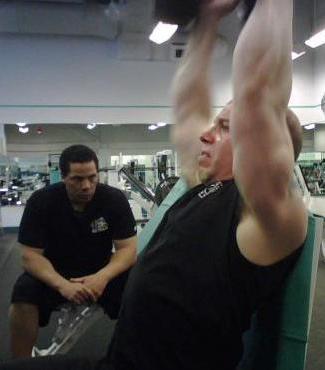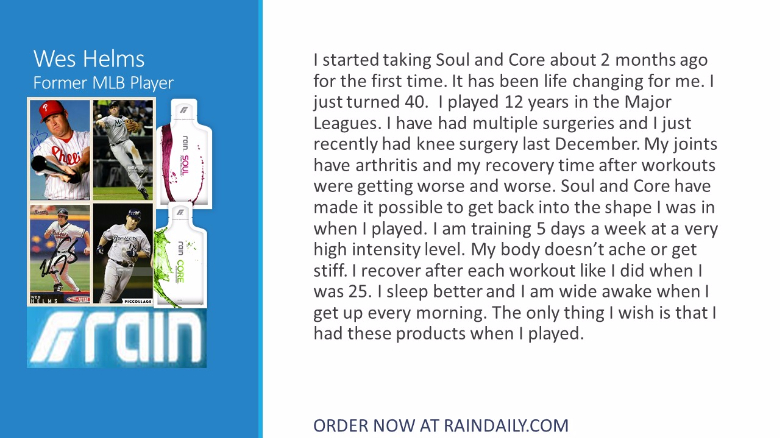 Overweight is and never has been a health problem. Over-Fat is where your health is at risk. Teach your body to burn fat, build muscle and boot its metabolic rate today. Overweight is and never has been a health problem. Over-Fat is where your health is at risk. Teach your body to burn fat, build muscle and boot its metabolic rate today.Our Black Friday/Small Business Saturday/Cyber Monday Sale continues today. Get 50% off all Annual online strength and conditioning/fitness programs. Fill out the fitness profile form to get started. www.fitnessgenerator.com/ussportsradio -Nate Study Gives Overweight Adults Hope For Health For years, being overweight was among the worst health stigmas and with good reason. To be obese medically classified as being at least 20 percent above your ideal body weight was associated with a lack of self-discipline, as well as an increased risk of heart disease, stroke, diabetes and some types of cancer. It was considered common knowledge that extra poundage plain and simple would always lead to an early grave. But does it? While being overweight is certainly a health risk, a recent study suggests that the odds of dying of cardiovascular disease may be linked more closely to fitness than to fatness. In the March 1999 issue of The American Journal of Clinical Nutrition, researchers report that overweight men who were physically fit (as measured by performance on a treadmill) were less likely to die of all causes, including heart disease, than men who were lean but unfit. Overall, it's better to be lean than to be fat, because fatness is still an independent risk factor for cardiac disease as well as many other diseases, says Kerry J. Stewart, Ed.D., an associate professor of medicine at Johns Hopkins and director of cardiac rehabilitation and prevention at its Bayview Medical Center. But among those who are fat, the handful who are fit seem to have a good degree of protection from death from various causes. Specifically, the study followed nearly 22,000 men aged 30 to 83 years for an average of eight years. They were broadly categorized by cardiovascular fitness level (fit or unfit) and body weight (lean, normal or obese). Regardless of their body weight, those who were fit had lower death rates. In fact, unfit lean men had more than twice the risk of dying of all causes than obese men who were physically fit. The results of this study are encouraging for those who exercise regularly and achieve fitness, but are still overweight. Although body weight is determined mainly by how much you eat and exercise, genetics can play a part. Some people will never be thin, even if they exercise daily. Nevertheless, these people will still be better off in terms of better health, a better quality of life and a lowered risk of death.
Reach 6 Million New Customers Every Week With US Sports Marketing. Home Of The All-Biz Advertising Specials. Effective, Affordable Sports Marketing With Your Positive Bottom Line The Top Priority
Let's Boost Your Business Today! http://bit.ly/USSportsMarketing
US Sports Online Strength and Conditioning Powered By RAIN's SOUL!
 |
Showing posts with label body building. Show all posts
Showing posts with label body building. Show all posts
Friday, November 25, 2016
Study Gives Overweight Adults Hope For Health
Thursday, October 16, 2014
Simple Guidelines For Effective Weight Training
This is Part 2 of a 2 Part article.
What is weight training? - Machine or free weight implements that are pushed, pulled or lifted for the isolation of specific muscle groups. Machine exercises generally have a pre-set range of motion and require less balance and control so learning is faster. Free weights (dumbbell, barbells) are usually more advanced forms of training where virtually any movement can be done for overall development.
Fundamental Guidelines
- Frequency - 2 to 6 times per week
- Duration - 20 to 130 minutes
- 1RM - One repetition with maximum weight
- Intensity - Relationship of weight used to your maximum strength level
- Volume - Number of sets and repetitions performed
Intensity and Volume Guidelines
|
Each Phase of training has a corresponding intensity and volume range. Training for endurance is much different than training for maximum power! You should spend the most time in the phase of training that most closely matches your goals. However, you will always want to spend some time in the other phases of training so that your progress doesn't stagnate from a lack of variation. This is what periodization is all about! All Fitrex.com programs will follow a specific periodization ,map, depending upon the emphasis of the program that you choose!
- Dan Wirth M.A., C.S.C.S.
- Fitness Director (US Sports Online Strength and Conditioning)
- Director of Strength and Conditioning
- The University of Arizona
Wednesday, August 27, 2014
A Complete Fitness Program
The basic components of a sound fitness program are below. Put these components into a progressive plan for maximum results. The trainers and coaches of US Sports Online Strength and Conditioning can design and deliver your customized strength, cardiovascular, flexibility, and nutrition program complete and ready for you to implement in 24 hours or less. Click here and fill out the free fitness profile form to get started. And then prepare for fitness success!
-Nate
Types of Exercise
From John Hopkins Health
Fitness is most easily understood by examining its components--cardiovascular endurance, muscular strength, muscular endurance and flexibility.
Cardiovascular endurance is the body's ability to do large muscle work, i.e. moving the body over a period of time. This ability is dependent on the cardiovascular system's ability to pump blood and deliver oxygen through your body. Cardiovascular endurance should be a central component of your overall fitness program. Improving cardiovascular endurance increases your supply of oxygen and energy to your body. It also decreases your risk of heart disease, stroke, high blood pressure and other life-threatening diseases.
VIDEO Reveals SECRETS to Transform Your Body Faster
When a heart is well-conditioned, it is like any other muscle--it becomes stronger and more efficient. A normal heart beats at a rate of approximately 70 beats per minute at rest or about 100,000 beats a day. The well-conditioned heart can actually beat as few as 40 times a minute at rest or approximately 50,000 beats per day. A well-conditioned heart conserves energy, and can supply oxygen-rich blood to the rest of the body with half the effort.
Strength is the ability of a muscle or group of muscles to exert an amount of force, typically in a one-time burst of effort. Weight-lifting (or "resistance training") is a classic example of strength-training because it increases muscle strength and mass, as well as bone strength, by placing more strain on muscles and bones than they are used to. When you lift weights, muscles are forced to meet that challenge by generating more force-generating proteins to feed the "fibers" that grow during exercise.
Most muscles have a combination of two types of fibers that are challenged during strength-training activities: Fast-twitch fibers provide the explosive force needed for weight-lifting or activities such as sprint racing. Slow-twitch fibers are for endurance, such as the ability for muscle to withstand fatigue. Most muscles have a 50-50 blend of fast-and slow-twitch fibers, but others have an advantage one way or the other. When you make muscles work harder, you actually tear these fibers. As they rebuild, they get stronger and bigger, resulting in harder, tighter and larger muscles.
Muscle Endurance is the ability to resist fatigue and continue to exercise over long periods of time. While strength-training is needed to maintain muscle strength, endurance training is required to achieve stamina. Muscular endurance is the ability of muscles to continue working strong without rest, such as the ability of a quarterback to throw long pass after pass.
Flexibility is the ability of joints and muscles to achieve a full range of motion. This results in the preventing injuries and helps keep your body feel comfortable after exercise. Despite popular opinion, there's no evidence that you should lose flexibility as you build muscle.
Unfortunately, there is truth that the natural aging process can rob you of muscular strength, endurance and flexibility--if you don't maintain them. That's why a regular fitness regimen becomes increasingly important as you age.
Subscribe to:
Comments (Atom)





